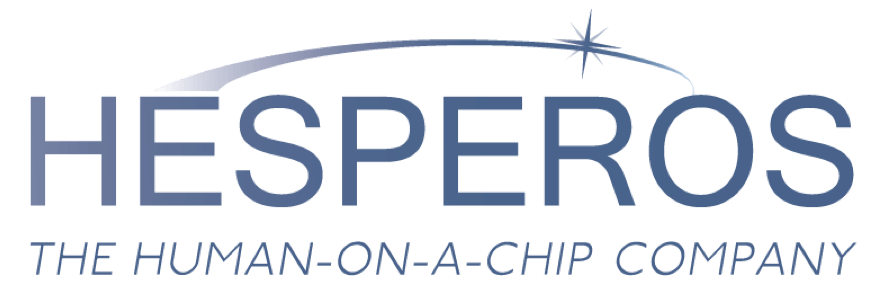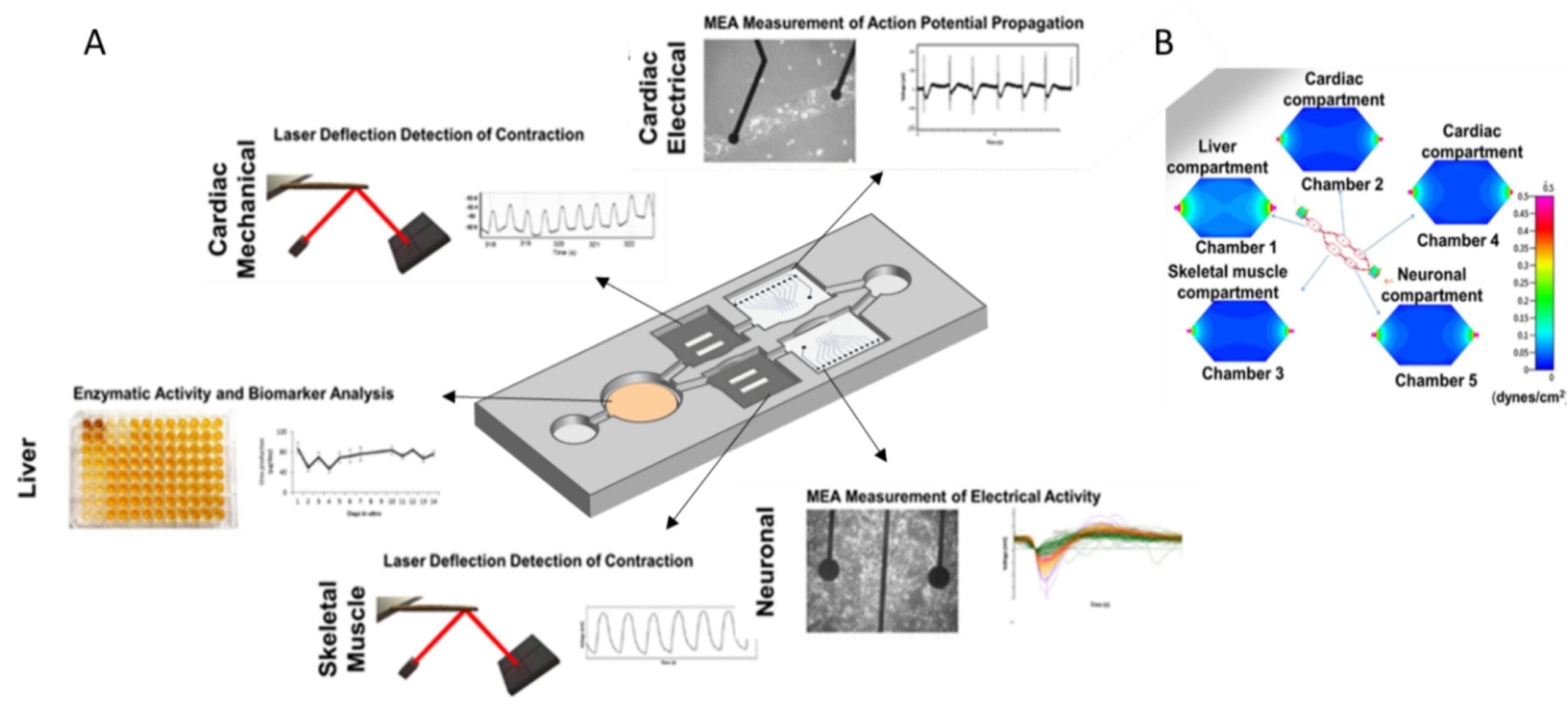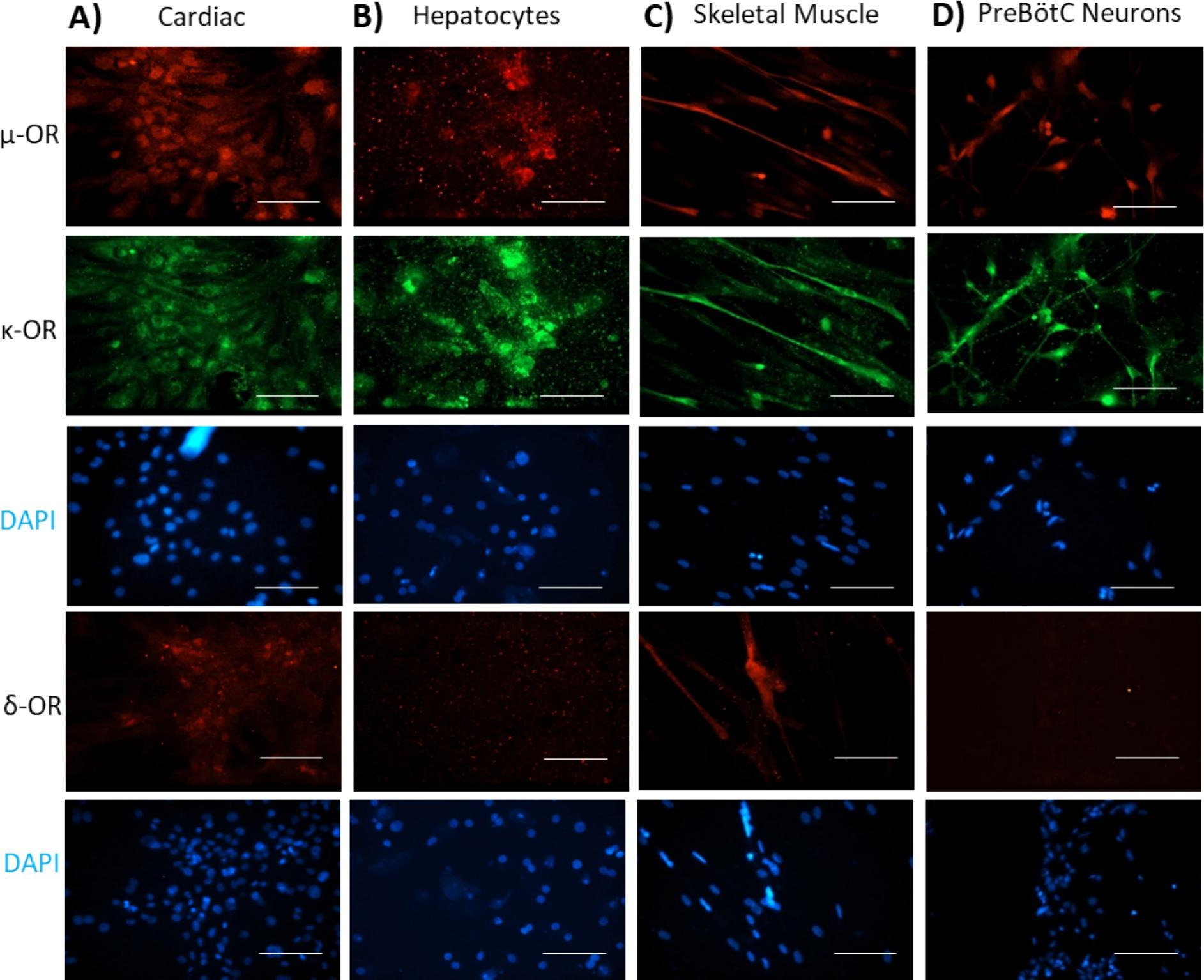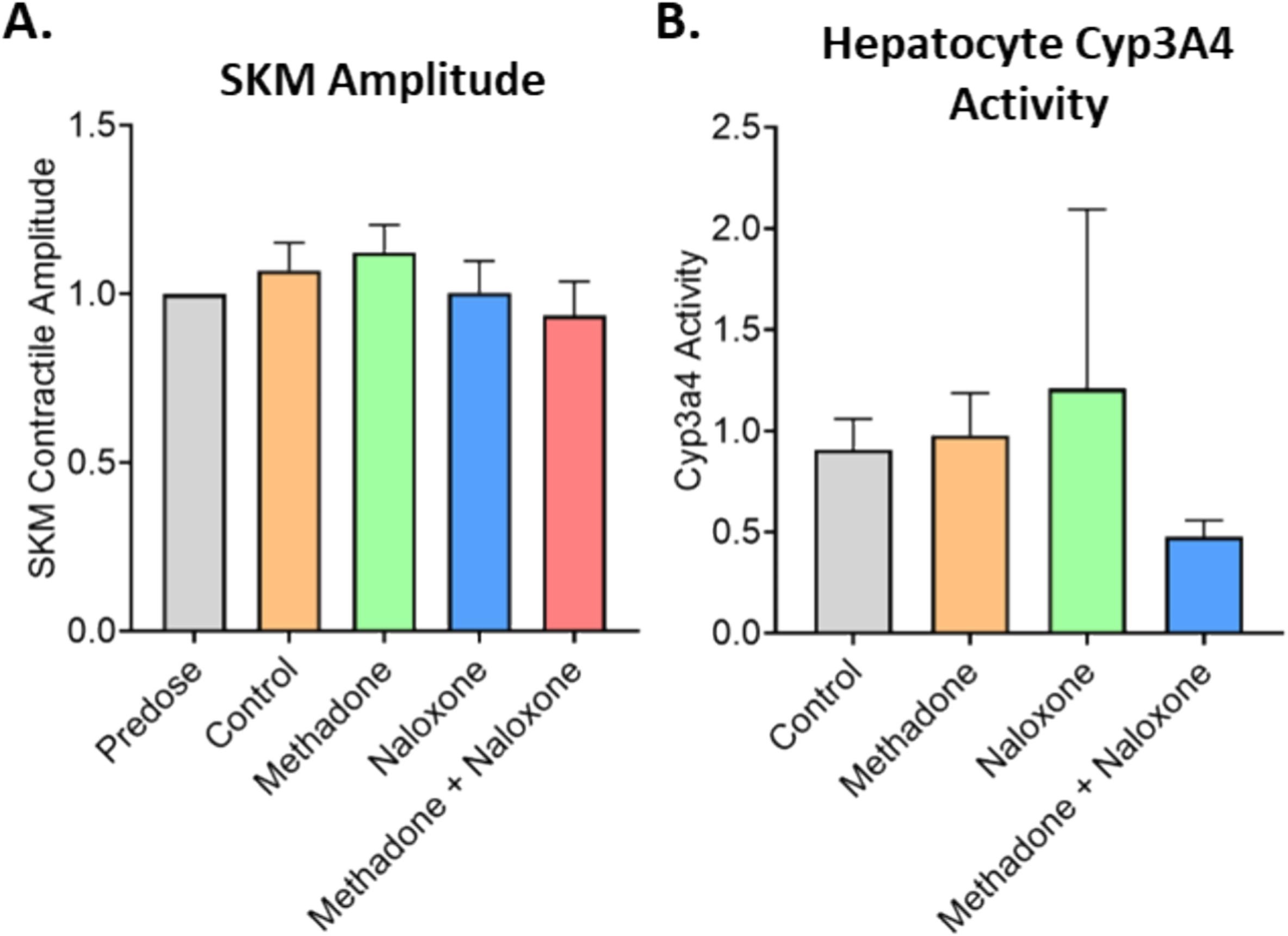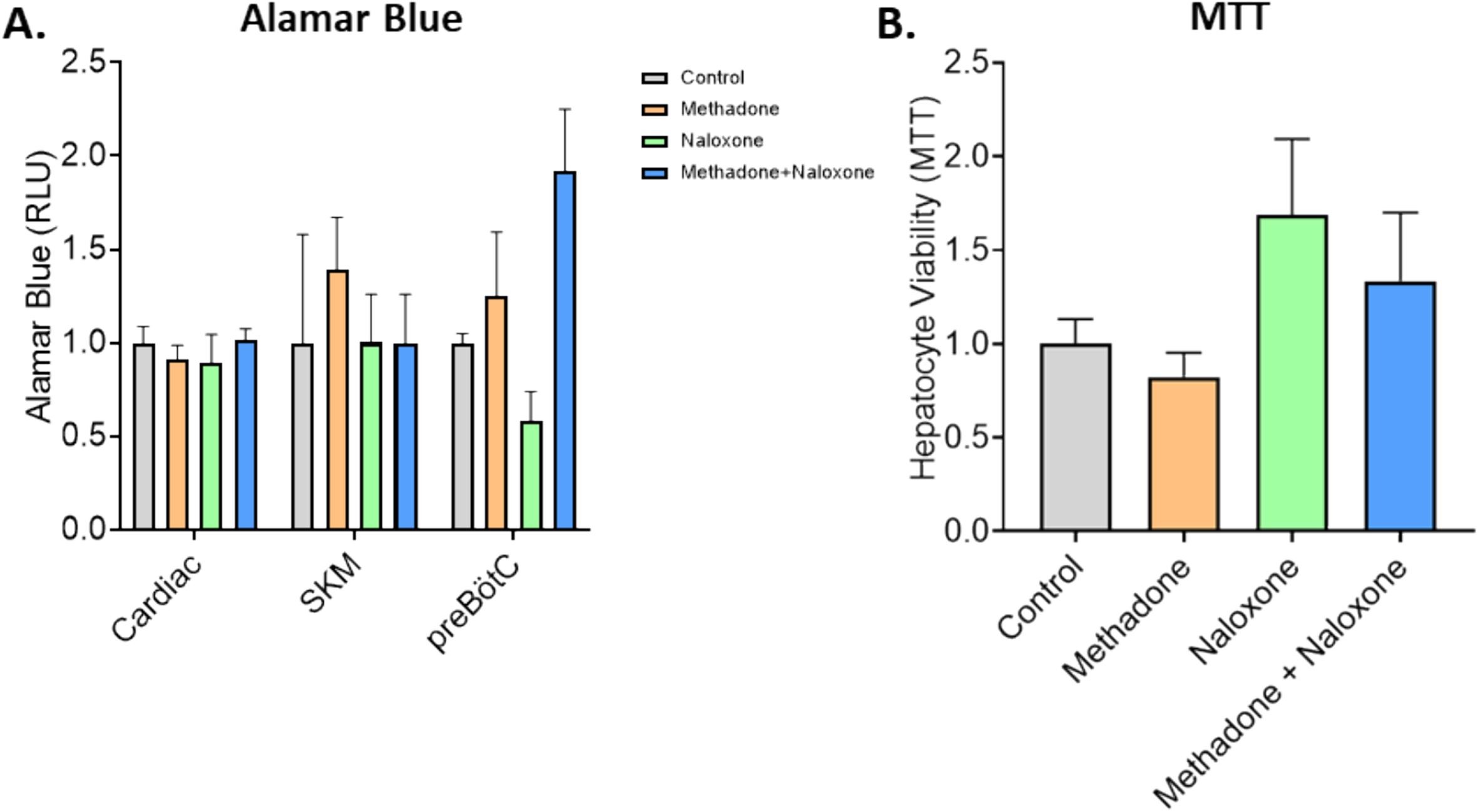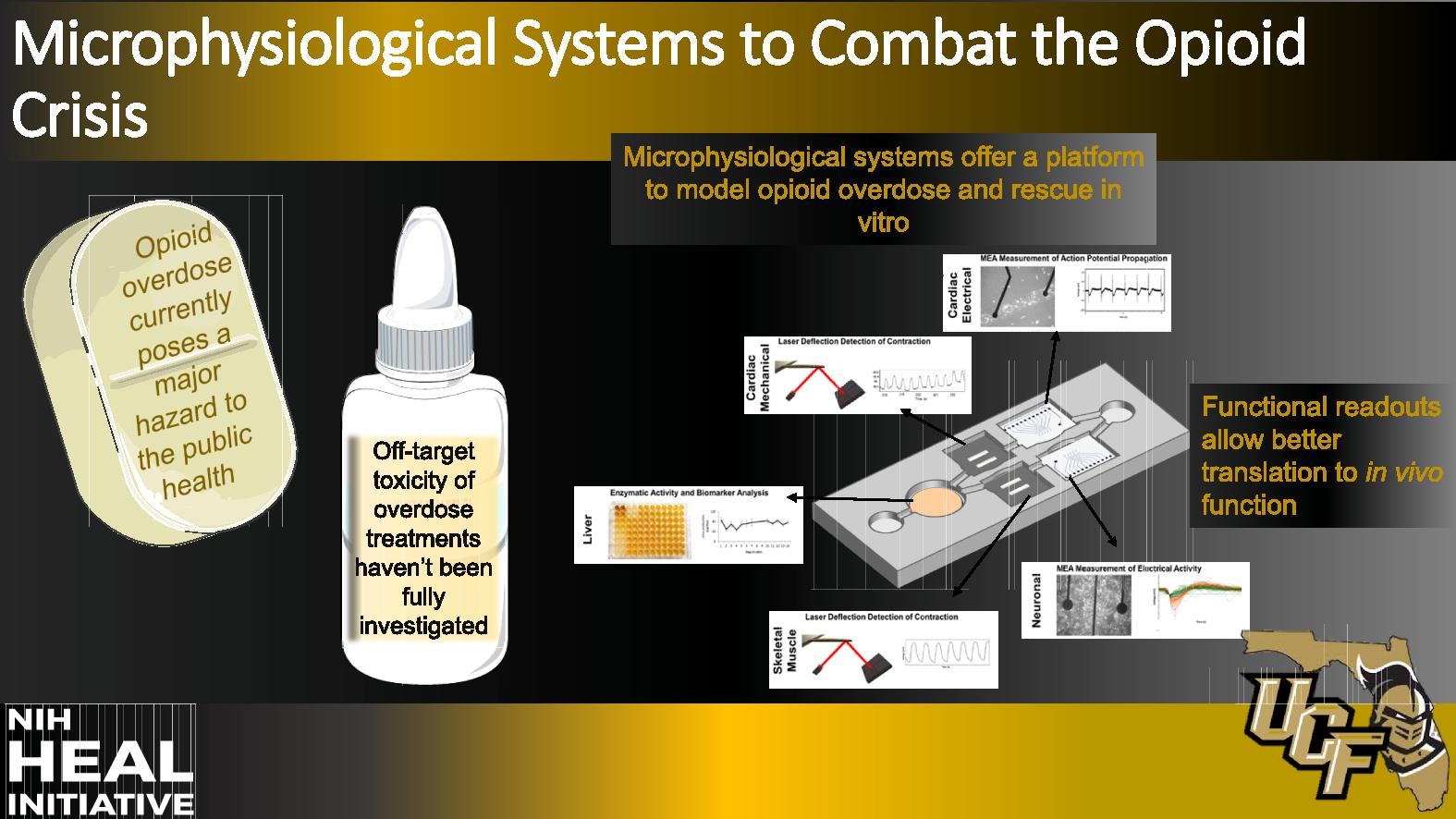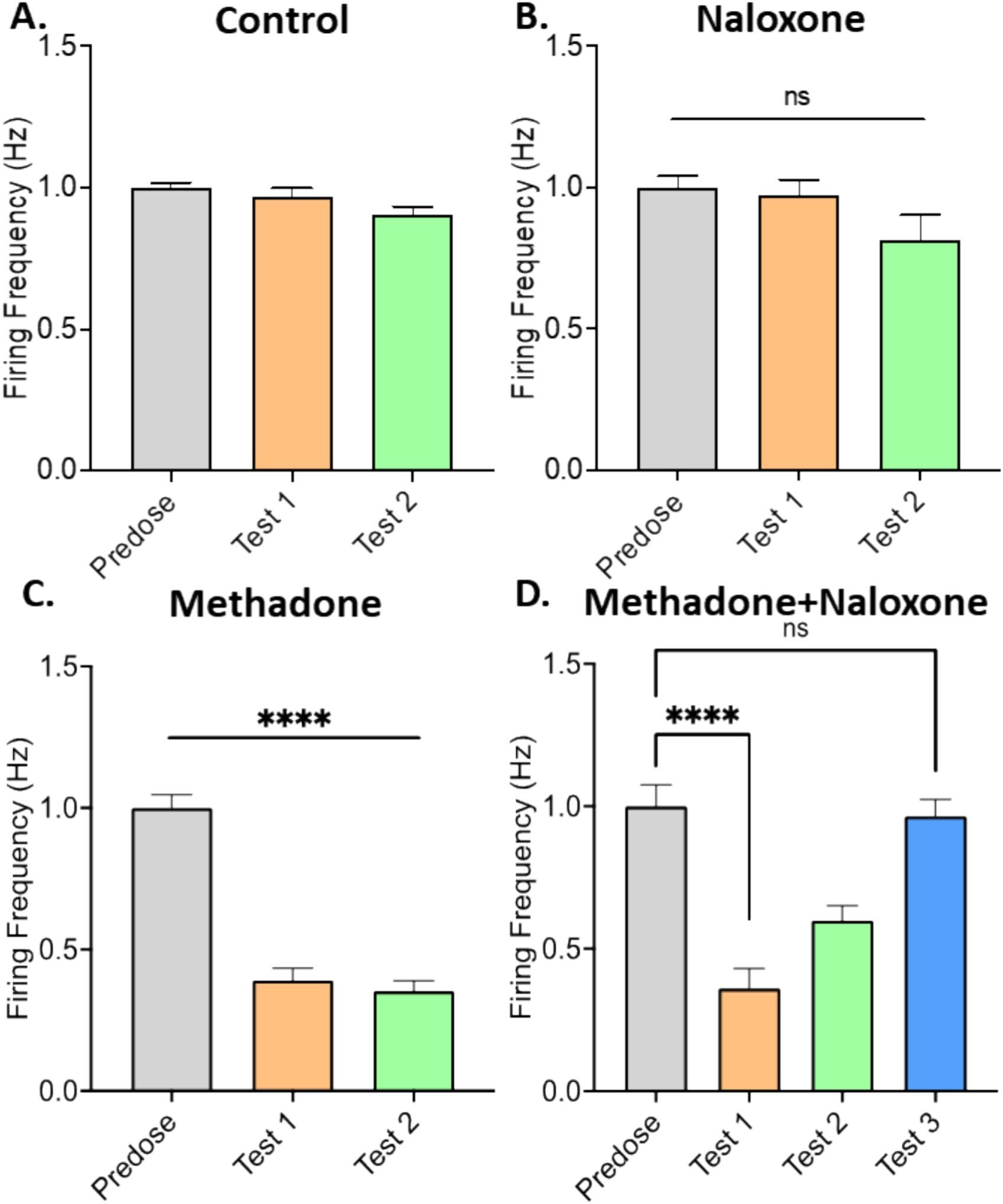Key Results from Study
New study describes a human cell based, multi-organ, microphysiological acute opioid overdose and recovery (AOOR) model designed to help researchers address the persistent opioid crisis
- Model successfully demonstrated that naloxone could restore preBötC activity, but also could reveal associated cardiac toxicity by adversely affecting the heart muscle cell contractile force and electrical function.
- Human-on-a-Chip® platform can reproduce efficacy and characterize off-target toxicity of opioid overdose recovery agents.
Orlando, FL – January 9, 2025 – Hesperos, Inc., in collaboration with researchers from the University of Central Florida (UCF), has developed a multi-organ, microphysiological acute opioid overdose and recovery (AOOR) model designed to help researchers address the persistent opioid crisis. Utilizing a human cell-based platform, the model can replicate overdose and successful recovery and permit researchers to study the effects of the recovery agent on each organ. In addition to reproducing efficacy, the model can also characterize off-target toxicity.
The study, titled "Microphysiological system to address the opioid crisis: a novel multi-organ model of acute opioid overdose and recovery" and published in Current Research in Toxicology, describes the human cell-based system. The platform incorporated multiple organ and cell types, including skeletal muscle, brain, liver, and heart. PreBötC cells, which regulate autonomic breathing and shut down during overdose, were used to model brain activity. Liver cells metabolized the opioid and the recovery agent, naloxone (the most widely prescribed reversal agent), while heart cells were used to assess changes in contractile strength and electrical activity.
Though naloxone has a well-elucidated side effect profile, its use can be associated with more severe and/or serious side effects particularly in patients with a history of heart problems. The model successfully demonstrated that naloxone could restore preBötC activity, but also could reveal associated cardiac toxicity by adversely affecting the heart muscle cell contractile force and electrical function.
Drug abuse remains a critical public health challenge in the US, with more than 80,000 deaths ascribed to opioid overdose, according to the Centers for Disease Control and Prevention (CDC). Thus, the AOOR model could serve as a platform for testing other recovery agents, potentially advancing safer and more effective treatments for opioid overdose.
James J. Hickman, PhD, Chief Scientist at Hesperos and a professor at UCF, emphasized the importance of this development: "Our multi-organ model provides a tool for better understanding opioid overdose and the potential toxicity of recovery agents. By replicating human physiological responses, we aim to provide clinically relevant insights into potential treatments.”
This research builds on previous collaborations between Hesperos and UCF, including work funded under the National Institutes of Health HEAL initiative (https://heal.nih.gov/), offering a more comprehensive, multi-organ approach to studying the complexities of opioid overdose and recovery.
For access to the full study, visit https://doi.org/10.1016/j.crtox.2024.100209.
